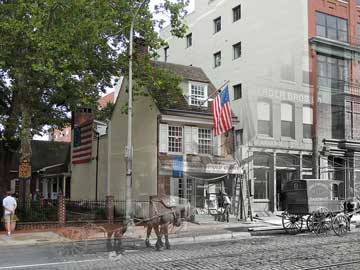
Betsy Ross House (1900 & today)
The building at 239 Arch Street, now known as the Betsy Ross House, was built over 250 years ago. The front portion was built around 1740, with the stair hall (or piazza) and the rear section added 10 to 20 years later.
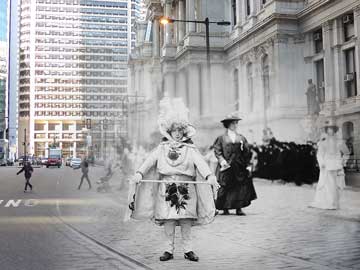
New Year’s Day 1909
Mummers at City Hall (New Year’s Day 1909 & today) The Mummers parade traces back to mid-17th-century roots, blending elements from Swedish, Finnish, Irish, English, German, and other European heritages, as well as African heritage. The parade is related to the Mummers Play tradition from England, Ireland, Scotland and Wales. Revivals of this tradition are still celebrated annually in South Gloucestershire, England on Boxing Day and in parts of Ireland on St. Stephen's Day and also in the Canadian province of Newfoundland and Labrador around Christmas. (Wikipedia)
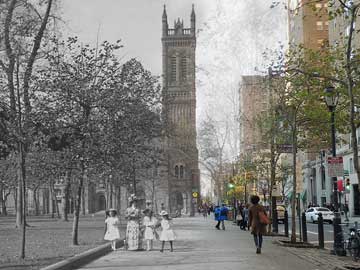
Rittenhouse Square (1909 & today)
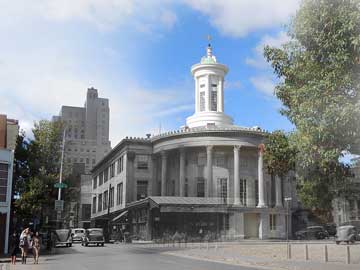
Merchants Exchange (1939 & today)
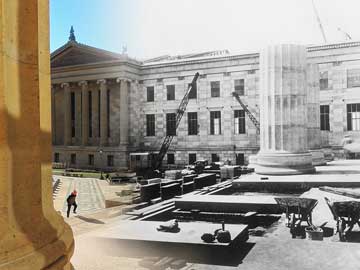
Philadelphia Museum Of Art (1926 & today)
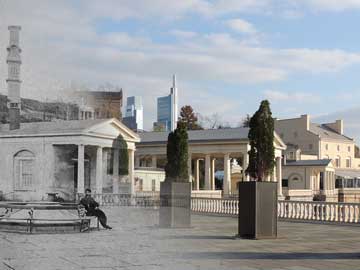
Fairmount Waterworks Bench (c1880 & today)

Water Works from the West bank. (1855 & today)
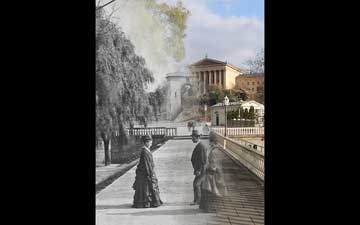
Fairmount Waterworks Walkway (c1880 & today)
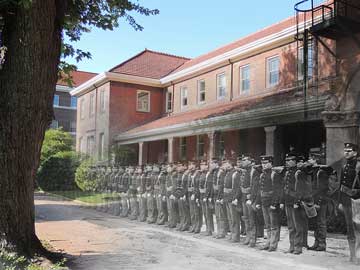
Navy Yard Parade Grounds, Broad Street & Intrepid Ave. (1913 & today)
Marines mobilizing at League Island, Philadelphia Naval Shipyard, before going to Guantanamo, Cuba, in response to the Mexican Revolution.
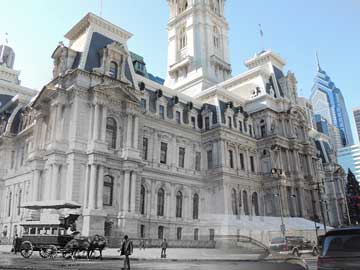
City Hall, NE corner (1896 & today)

Broad & Locust Street (c1908 & today)
Looking North towards City Hall from Broad and Locust with the Academy of Music on the left.
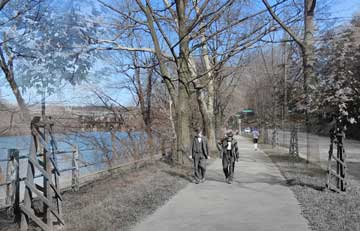
East River Drive Walk @ Hunting Park Ave.
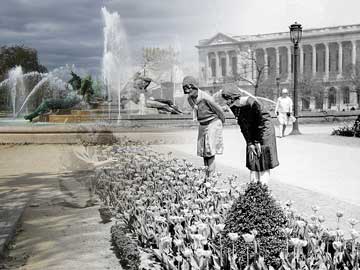
Logan Square Flappers
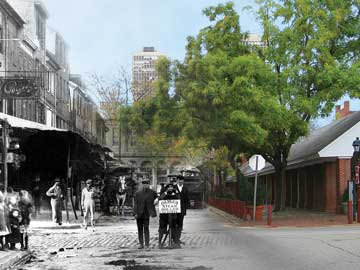
Danger! Steam Roller Work! 2nd & Lombard
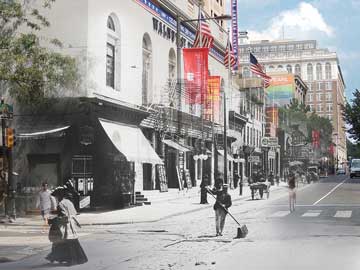
Walnut Street Theatre
The Walnut Street Theatre first opened its doors on February 2, 1809. The Walnut's first theatrical production, The Rivals, had President Thomas Jefferson and the Marquis de Lafayette in attendance on opening night.
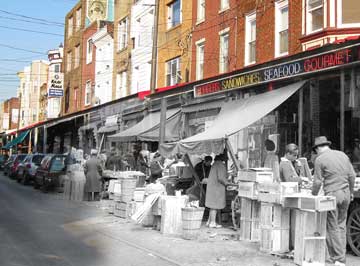
9th Street Market (9th & Federal)
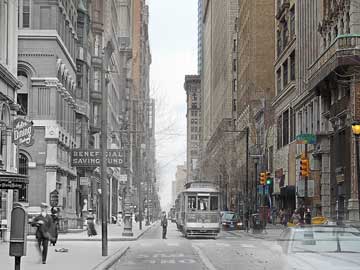
12th & Chestnut looking West. (1905 & today)
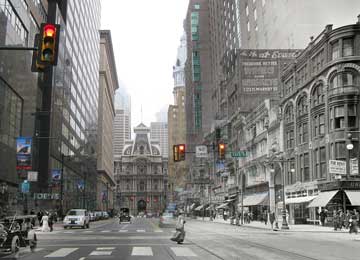
12th & Market St.
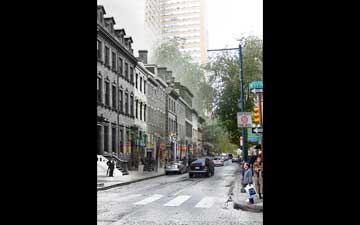
17th & Walnut Street
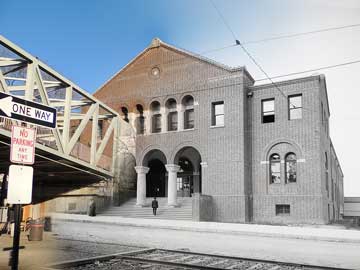
69th Street Elevated Rail Terminal
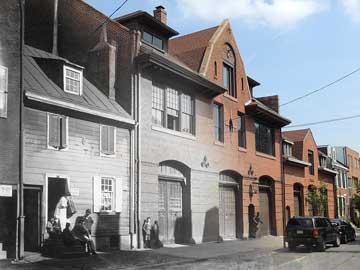
Engine House #3, 115 Queen Street (Weccacoe Engine Company) 1896 & today
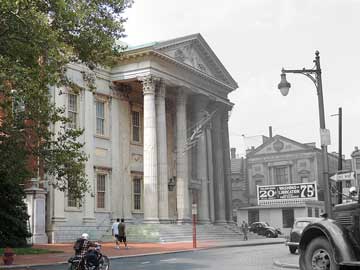
First Bank of the United States (1939 & today)
Located on Third Street, between Chestnut and Walnut Streets. Built: 1795-97
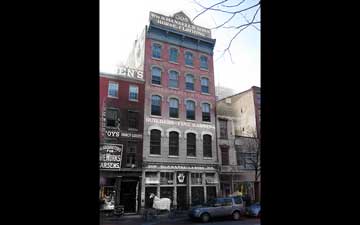
306 Market Street
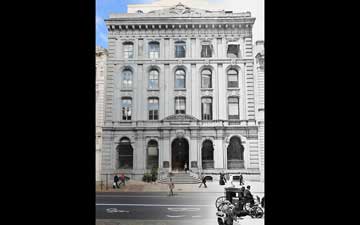
421 Chestnut St. (1900 & today)
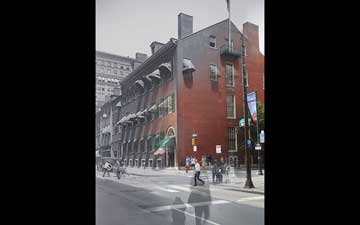
The Philadelphia Club, 13th & Walnut (1916 & today)
The Philadelphia Club, founded in 1834 is one of the oldest gentlemen's clubs in the United States. Notable members have included General George Meade, author Owen Wister, and many members of the Du Pont and Biddle families.
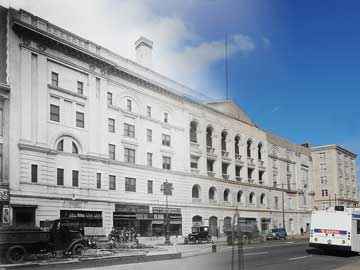
1400 Poplar Street, The Metropolitan Opera. c1925
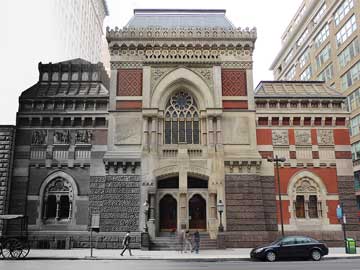
The Pennsylvania Academy of the Fine Arts (PAFA)
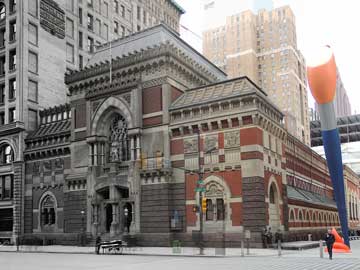
The Pennsylvania Academy of the Fine Arts (PAFA)
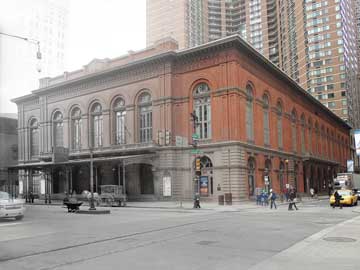
The Academy of Music (circa 1900 & today)
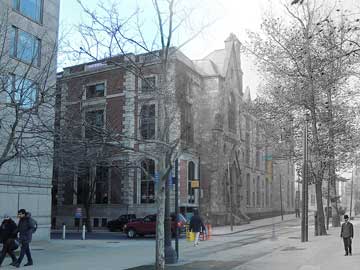
Academy of National Science, Logan Square (c1905 & today)
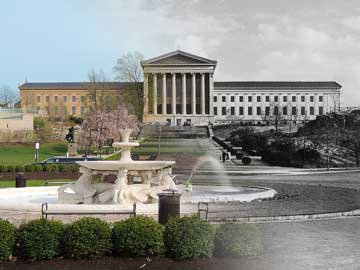
Art Museum Rear
Rear of the Art Museum (1928 & today) The large fountain set in the center of the circular drive is the "Fountain of the Sea Horses". It is a reproduction of one built for Rome's Villa Borghese around 1740 and was a gift from the Italian dictator Benito Mussolini in 1926 to celebrate America's sesquicentennial. The fountain just underwent a $1.7 million restoration.
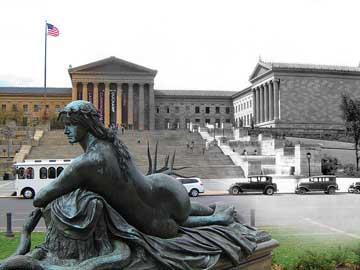
Philadelphia Museum of Art (c1930 & today)
Construction of the Main Building began in 1919, when Mayor Thomas B. Smith laid the cornerstone in a Masonic ceremony. Because of shortages caused by World War I and other delays, the new building was not completed until 1928. The facade and columns are made of Minnesota dolomite. (Wikipedia)
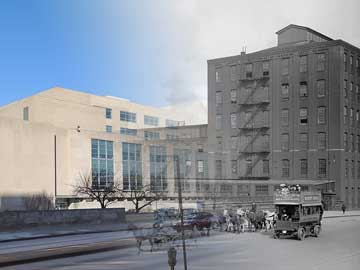
Baldwin Locomotive factory on North Board street.
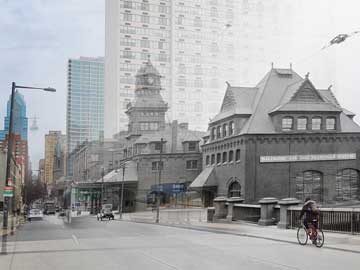
Baltimore & Ohio Railroad Station
Baltimore & Ohio Railroad Station, Philadelphia (also known as 24th St. Station) was the main passenger station for the Baltimore & Ohio Railroad in Philadelphia, Pennsylvania. Designed by architect Frank Furness, it stood at 24th Street and the Chestnut Street Bridge from 1888 to 1963. The station was demolished in 1963. (Wikipedia)
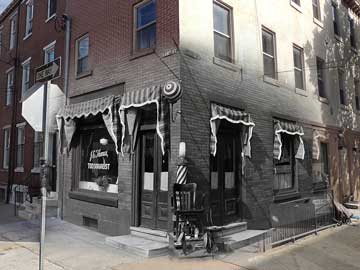
Barber Shop at 19th & Bainbridge. (1937 & today)
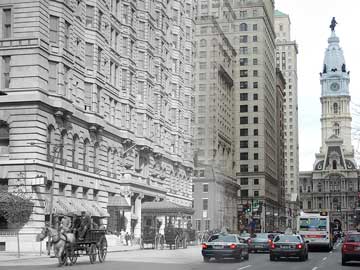
The Bellevue (circa 1905 & today)
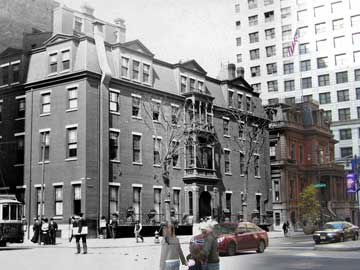
Bellevue Hotel
Opened in 1882, the Bellevue Hotel soon became popular as a meeting place for socialites and fashionable clubs. It later merged with the Stratford. In 1904, only 19 hours after the Bellevue's ceremonious closing, the Bellevue-Stratford opened across Walnut Street on the site of the old Stratford.
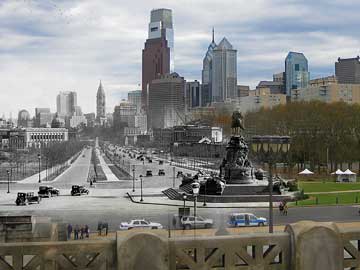
Ben Franklin Parkway
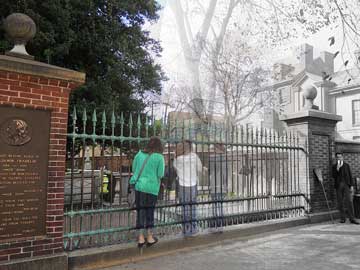
Ben Franklin Gravesite
Ben Franklin died on April 17, 1790, with his grandsons William Temple and Bennie at his side. Benjamin Franklin was 84 years old. He was buried beside his wife Deborah, who had preceded him in death by 25 years. His beloved son Francis Folger, who had died at age 4 from smallpox, was also in the family plot. (ushistory.org)
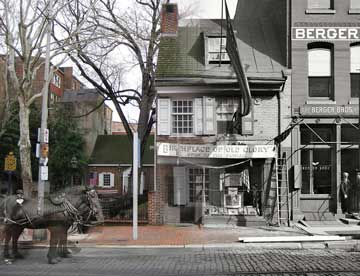
Betsy Ross House (1900 & today)
The building at 239 Arch Street, now known as the Betsy Ross House, was built over 250 years ago. The front portion was built around 1740, with the stair hall (or piazza) and the rear section added 10 to 20 years later.
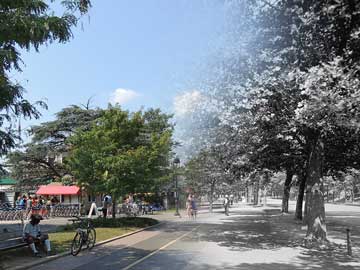
Kelly Drive (1904 & today) Intersection of Kelly Drive and Sedgely Road.
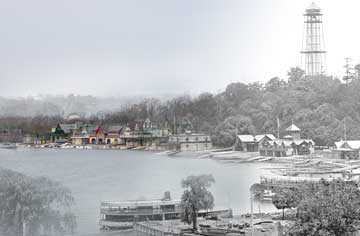
Boat House Row
The old part of this photo is from 1876. The tower you see was built to overlook the Centennial Exposition in Fairmount Park.
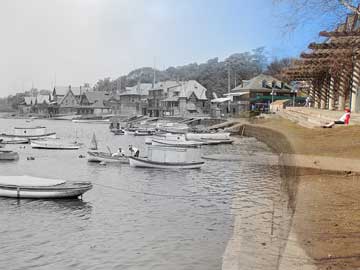
Boathouse Row (Circa 1910 & Today)
The history of Boathouse Row begins with the construction of the Fairmount Dam and the adjacent water works. The Dam was built in 1810 as part of a lock at the Falls of the Schuylkill to transport coal downriver.
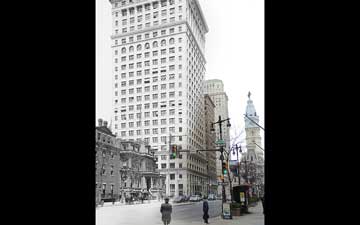
The Land Title Building and Annex, 1400 Chestnut Street (1904 & today)
It was built for the oldest title insurance company in the world, the Land Title Bank and Trust Company. The two-building complex, joined at the first floor, was built in two phases. The earlier, northern one of the building's two towers, erected in 1898 of 15 stories, was designed by Chicago-based architect Daniel Burnham, who was an early pioneer in the development of tall buildings. The southern, 22-story, 331-ft tower, added in 1902, was also designed by Burnham in collaboration with Philadelphia architect Horace Trumbauer; it was built on the site of the former Lafayette Hotel. The building was listed on the National Register of Historic Places in 1978. (Wikipedia)
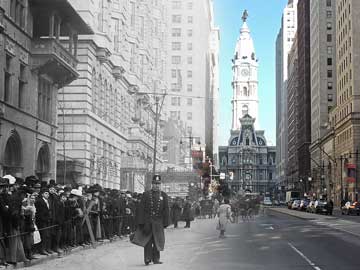
South Broad Street on New Years Day (1909 & today)
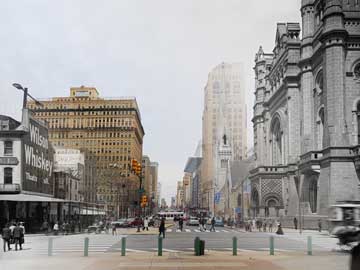
Looking North from City Hall
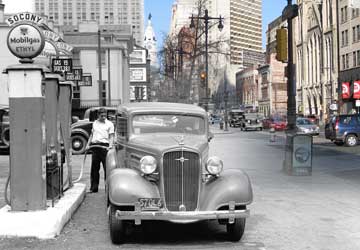
Broad Street Socony (Broad & Pine St.)
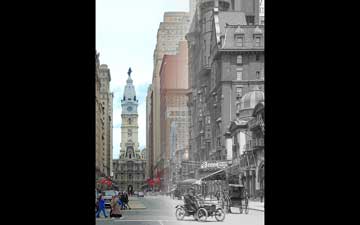
The Broad Street Theatre (1905 & today)
The Broad Street Theatre was built in 1876 at Broad & Locust Streets. An ornate building designed in the Moorish style with two domes, it began life as Kiralfy's Alhambra Palace.
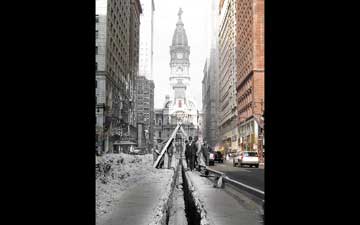
Broad Street Water Pipe
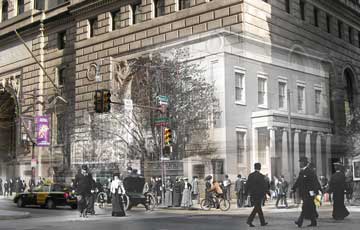
Broad & Walnut, looking NE.
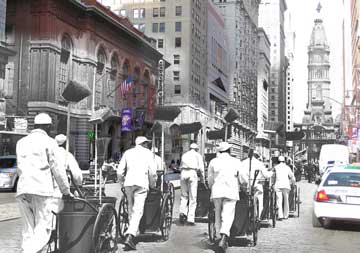
Broom Brigade on Broad Street
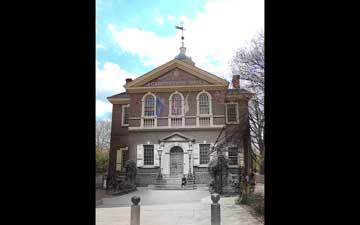
Carpenters' Hall
Founded in Philadelphia in 1724, the Carpenters' Company was organized to share information about the art of building, determine the value of completed work, hone architectural skills, and help indigent craftsmen.
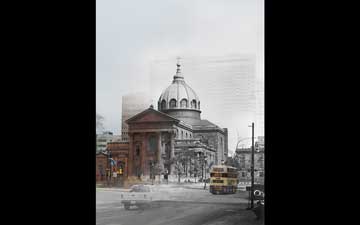
Cathedral Basilica of Saints Peter and Paul (1928-today)
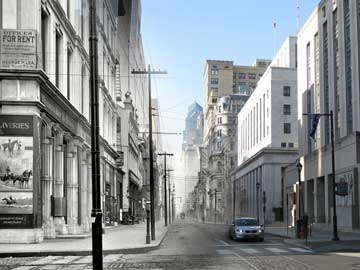
9th & Chestnut (1900 & today)
Looking West up Chestnut Street from 9th.

Children at the Fairmount Water Works
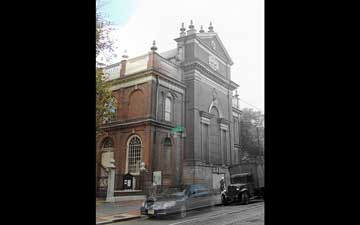
Christ Church (1939 & today)
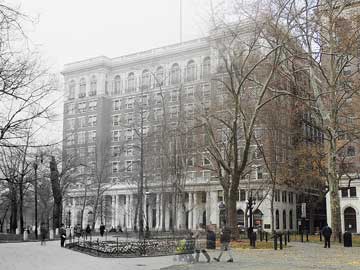
The Curtis Publishing Company (c1910 & today)
The Curtis Publishing Company was founded in 1891 by publisher Cyrus Curtis, who published the People's Ledger, a news magazine he had begun in Boston in 1872 and moved to Philadelphia in 1876. In 1910 the company built its headquarters building at the intersection of S. 6th and Walnut Streets near Independence Hall, designed by Edgar Viguers Seeler (1867-1929) in the Beaux Arts style.
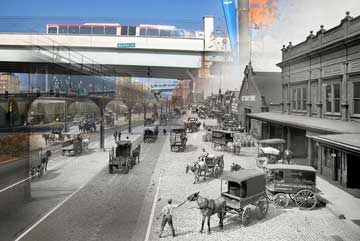
Delaware Ave. looking North from Market Street.
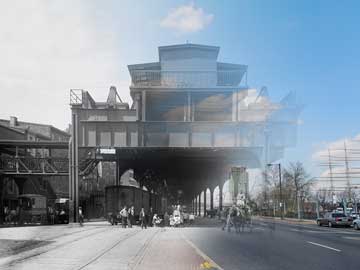
Delaware Ave. & South Street
Delaware Ave. & South Street looking North with the beginning of the raised Delaware Ave. train. Yes, there was a raised train on Delaware Ave.! Old photo is circa 1900.
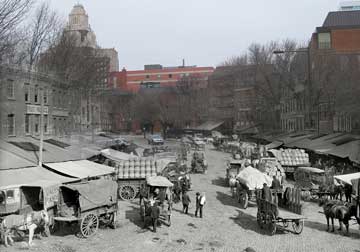
Dock Street Market
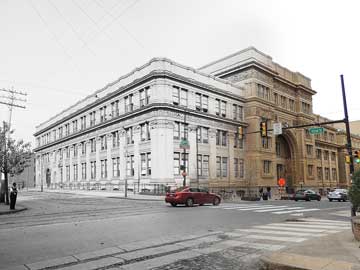
Drexel University Main Building (c1900 & today) 32nd & Chestnut Street
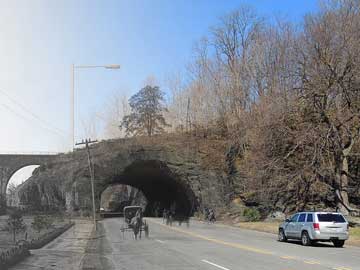
East River Drive Rock Tunnel (1900 & today)
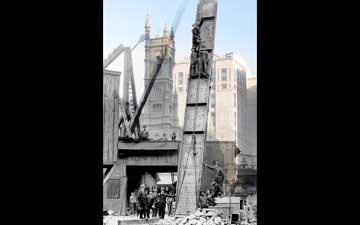
Construction of the Elevated at City Hall
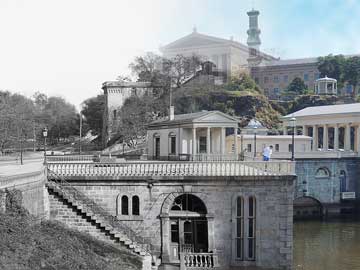
The Fairmount Water Works (c1901 & today)
Designed by Frederick Graff, the Water Works was initially constructed between 1812 and 1815 on the east bank of the Schuylkill River. The Water Works initially consisted of a 3 million gallon earthen reservoir atop Faire Mount (now site of the Philadelphia Museum of Art), and a pump house with two steam engines to pump water. Between 1819 and 1821, a 1,600-foot-long dam was built across the Schuylkill to direct water to a Mill House with three water wheels that replaced the steam engines in 1822.
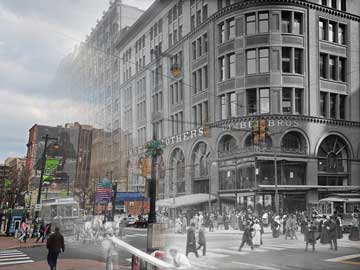
Gimbel Brothers, SE corner of 9th & Market (1905 & today)
Gimbel Brothers (Gimbels) was an American department store corporation from 1887 until 1987. The company is known for creating the Gimbels Thanksgiving Day Parade, the oldest parade in the country.
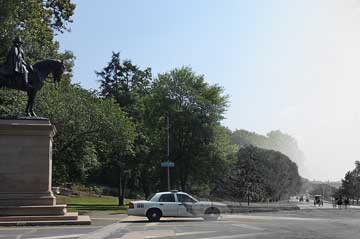
Grant Statue on Kelly Drive (1900 & today)
The sculpture of Ulysses S. Grant, executed by Daniel Chester French, the sculptor of the Lincoln Memorial, was dedicated on the 75th anniversary of Grant's birth (April 27th, 1899). President McKinley came for a military parade which preceded the unveiling. Thousands of Philadelphians turned out for the dedication of this statue. (ushistory.org)

Hamilton Court Apartments (c1904 & today)
Build in 1901, the Hamilton Court Apartments and other multi-story modern brick hotels became popular buildings into West Philadelphia.
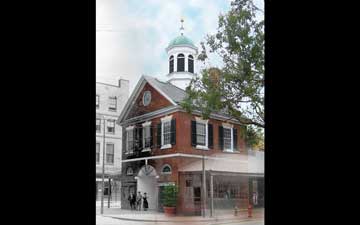
Head House
Head House New Market, as it was originally known, later also known as Head House Market and Second Street Market, is a historic street market on S. 2nd Street between Pine and Lombard Streets.
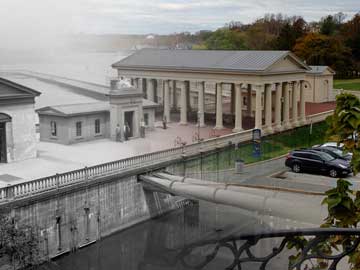
Fairmount Water Works (circa 1895 & today)
The Water Works in back of the Art Museum and the water holding tank which is now a parking lot!
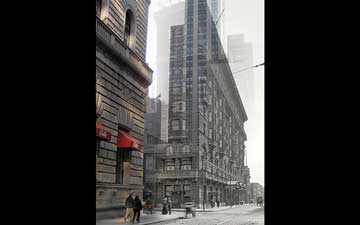
The Hotel Flanders on the SE corner of 15th & Walnut. (1905 & today)

Hotel Trainer's (Broad & Locust – 1905 & today)
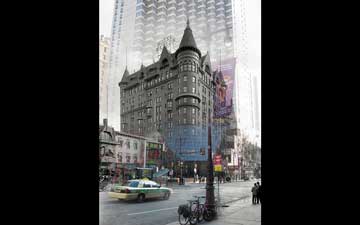
Hotel Walton, Broad & Locust Streets
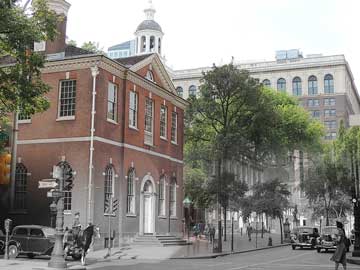
Independence Hall
Construction of the Pennsylvania State House, which came to be known as Independence Hall, began in 1732. It was a symbol of the nation to come. At the time it was the most ambitious public building in the thirteen colonies.
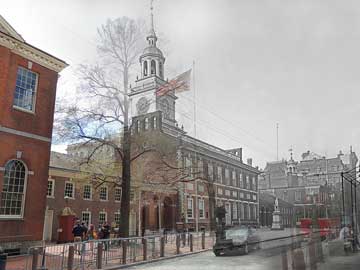
Independence Hall
The building has undergone many restorations, notably by Greek revival architect John Haviland in 1830, and by a committee from the National Park Service, in 1950, returning it to its 1776 appearance.

Independence Hall
Construction of the Pennsylvania State House, which came to be known as Independence Hall, began in 1732. It was a symbol of the nation to come. At the time it was the most ambitious public building in the thirteen colonies.
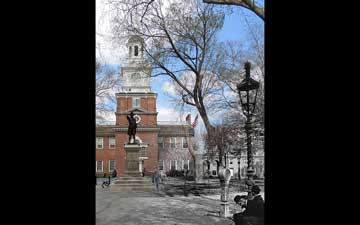
Independence Hall
Construction of the Pennsylvania State House, which came to be known as Independence Hall, began in 1732. It was a symbol of the nation to come. At the time it was the most ambitious public building in the thirteen colonies.
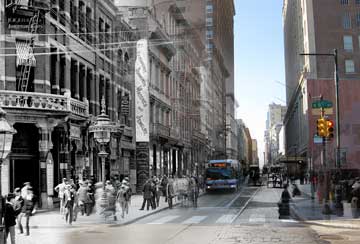
Jewelry District, 8th & Chestnut looking West
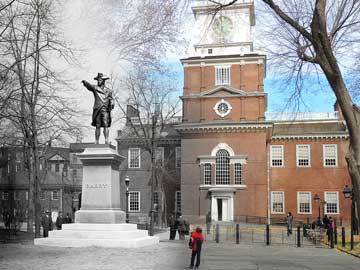
Commodore Barry Statue
Commodore Barry Statue (1900 & today) John Barry (March 25, 1745 – September 13, 1803) was an officer in the Continental Navy during the American Revolutionary War and later in the United States Navy. He is widely credited as The Father of the American Navy (and shares that moniker with John Paul Jones) and was appointed a Captain in the Continental Navy on December 7, 1775. He was the first Captain placed in command of a US warship commissioned for service under the Continental flag. After the war, he became America's first commissioned naval officer, at the rank of Commodore, receiving his commission from President George Washington in 1797. (Wikipedia)
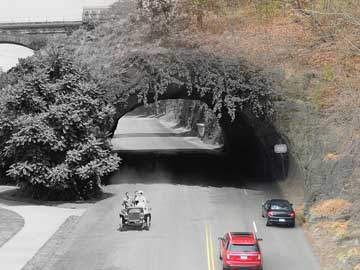
Kelly Drive Rock Tunnel (c1905 & today)
Looking north from the Girard Avenue Bridge showing the Promontory Rock Tunnel, bored in 1871, on East River Drive (Kelly Drive) in East Fairmount Park. Also shows a section of the New York Connecting Railway Bridge, built for the Pennsylvania Railroad 1866-1867, in the background.
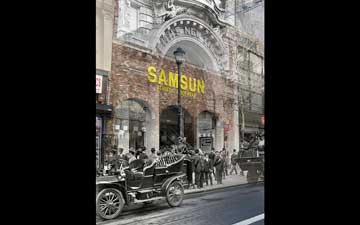
Kieths Theatre, Chestnut Street
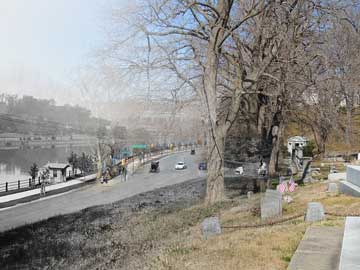
Laurel Hill (East River Drive from Laurel Hill Cemetery – 1900 & today)
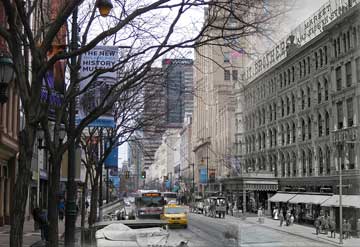
Lit Brothers (8th & Market)
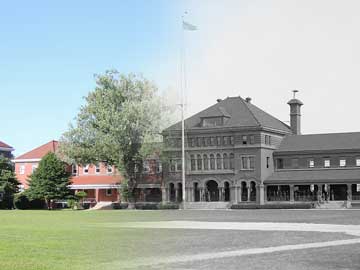
Marine Barracks, Navy Yard Parade Grounds, Broad Street & Intrepid Ave.
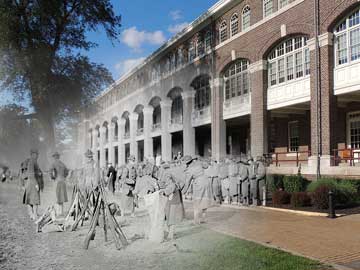
Navy Yard Parade Grounds, Broad Street & Intrepid Ave. (1913 & today)
Marines mobilizing at League Island, Philadelphia Naval Shipyard, before going to Guantanamo, Cuba, in response to the Mexican Revolution.
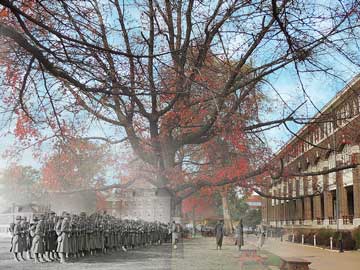
Navy Yard Parade Grounds, Broad Street & Intrepid Ave. (1913 & today)
Marines mobilizing at League Island, Philadelphia Naval Shipyard, before going to Guantanamo, Cuba, in response to the Mexican Revolution.
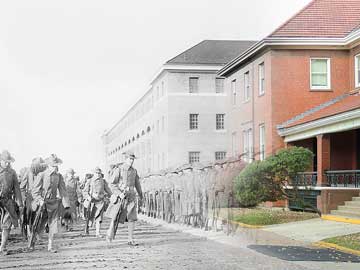
Navy Yard Parade Grounds, Broad Street & Intrepid Ave. (1913 & today)
Marines mobilizing at League Island, Philadelphia Naval Shipyard, before going to Guantanamo, Cuba, in response to the Mexican Revolution.
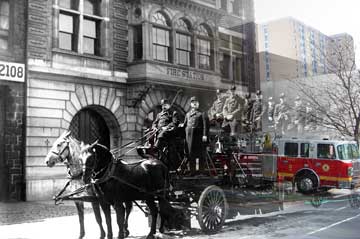
Market Street Fire Station
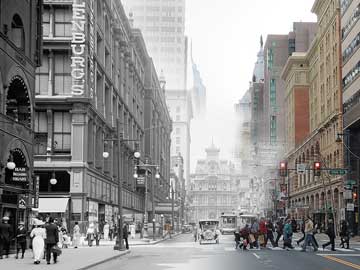
N. Snellenburg & Company
N. Snellenburg & Company, commonly known as Snellenburg's, was a Philadelphia, Pennsylvania based middle class department store and wholesale clothing manufacturer, established in 1869.
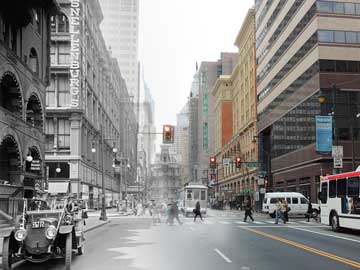
N. Snellenburg & Company
N. Snellenburg & Company, commonly known as Snellenburg's, was a Philadelphia, Pennsylvania based middle class department store and wholesale clothing manufacturer, established in 1869.
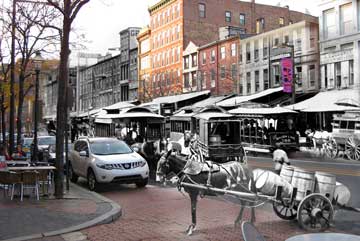
Market Street in Olde City
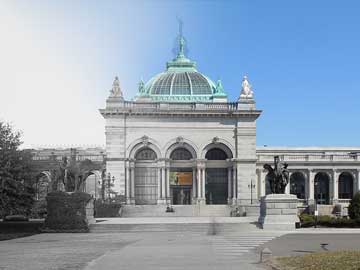
Memorial Hall in Fairmount Park
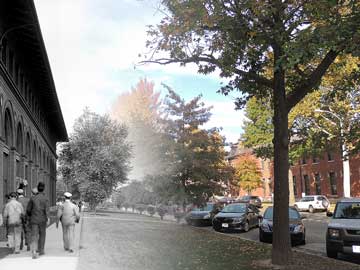
Broad Street in the Philadelphia Navy Yard
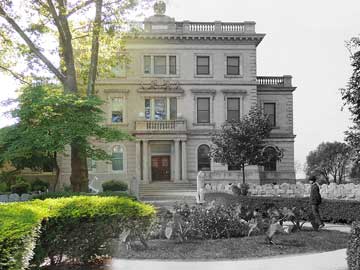
The Philadelphia Navy Yard Commandant's Office. (Broad Street & Constitution Ave. 1908 & today)
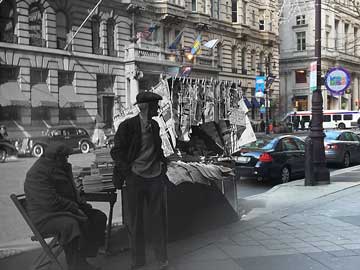
Bellevue Stratford Hotel
Newsstand on South Broad Street. (1939 & today) Bellevue Stratford Hotel across the street!
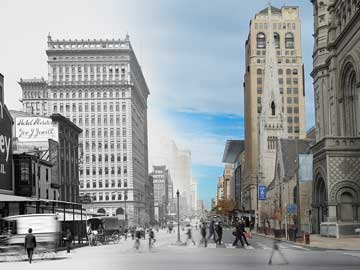
Broad Street North (1904-today)
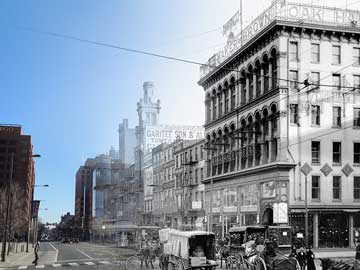
Oak Hall from 6th & Market Street, looking East.

Old Parish House (pre1910 & today)
American Street behind Christ Church.
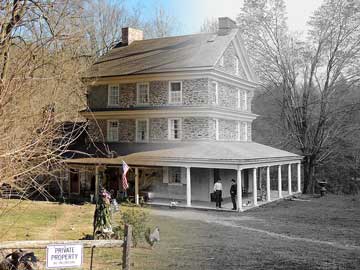
Old Monastery, Wissahickon
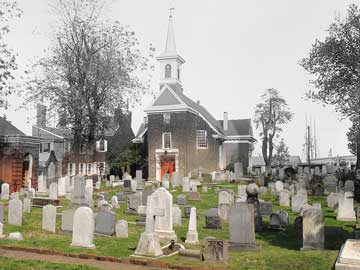
Gloria Dei (Old Swedes') Church (c1900 & today)
Gloria Dei (Old Swedes') Church, founded in 1677, and built between 1697 and 1700, is a historic church in the Southwark section of Philadelphia. The congregation was originally Swedish Lutheran, but has been Episcopalian since 1845. It’s the second oldest Swedish church in the United States after Holy Trinity Church (Old Swedes) in Wilmington, Delaware.
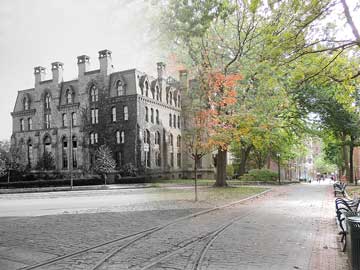
UPenn Claudia Cohen Hall (Logan Hall) 1900 & today
Claudia Cohen Hall was named in 2008 after the late Claudia Cohen (1950-2007), a Penn alumna, popular journalist, and former wife of trustee Ronald Perelman. Formerly known as Logan Hall (1906-2008) the building was the second building constructed by the University on its West Philadelphia campus and stands adjacent and just west of College Hall.
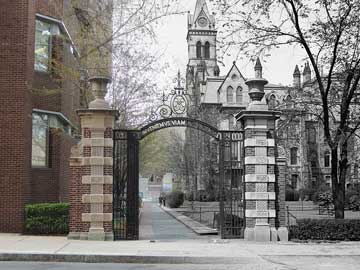
Class of 1893 Memorial Gate (1904 & today)
Located on the 3400 block entrance from Spruce Street to the UPenn campus. In the wrought-iron and stone work are the class numerals “93” and the letters “U of P”. On one of the panels is inscribed, “Erected June MCMIII”. And over the center arch are the words, “In Veniemus viam aut faciemus” which is Latin for “We will find a way, or we will make one”.
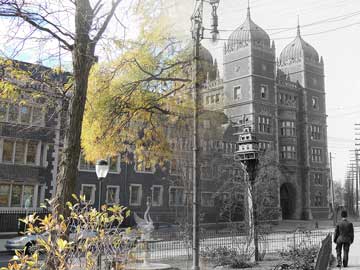
Penn Dorms (1900 & today)
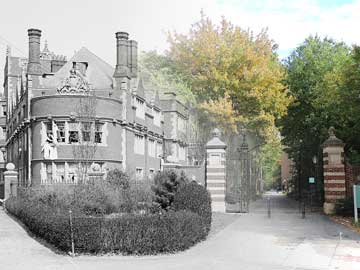
Hamilton Walk, University of Pennsylvania (1904 & today) Looking East from 38th Street.
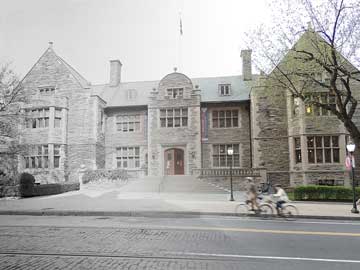
UPenn’s Houston Hall (c1901 & today) 3417 Spruce Street
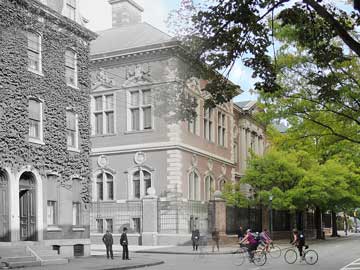
University of Pennsylvania Law Department (1908 & today) 34th & Sansom Street
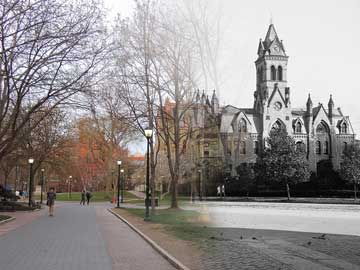
Penn Main Building Library (1900 & today)
Ut sed magna euismod leo laoreet congue. Fusce congue enim ultricies.
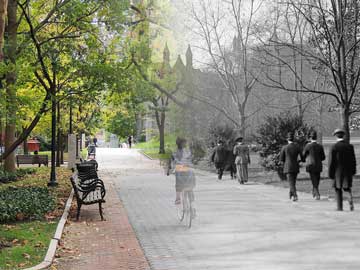
Entrance to the University of Pennsylvania (1900 & today)
Photo taken from Locust Walk looking towards College Hall.
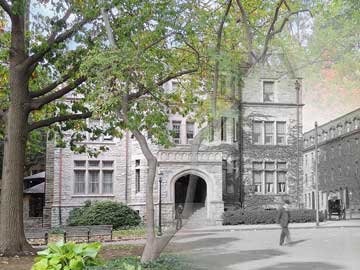
Penn's Psi Upsilon (1904 & today)
Southwest corner of 36th Street and Locust Walk.
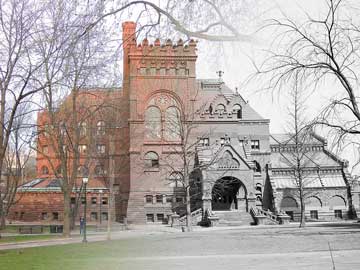
Fisher Fine Arts Library (1904 & today)
The Anne & Jerome Fisher Fine Arts Library, also known as the Furness Library, is located on the campus of the University of Pennsylvania, on the east side of College Green. Designed by the acclaimed Philadelphia architect Frank Furness (1839–1912), the red sandstone, brick-and-terra-cotta Venetian Gothic giant—part fortress and part cathedral—was built to be the primary library of the University, and to house its archeological collection. The cornerstone was laid in October 1888, construction was completed in late 1890, and the building was dedicated in February 1891. "It is the work of an artist." — Frank Lloyd Wright. (Wikipedia)
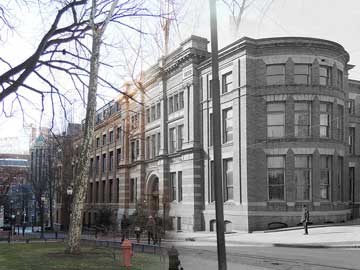
Penn Wistar Institute of Anatomy
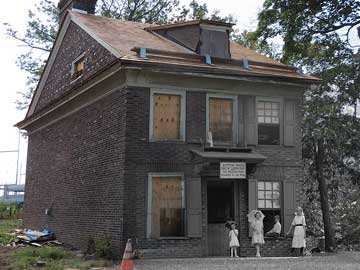
William Penn's Cottage (Letitia House) 1900 & today
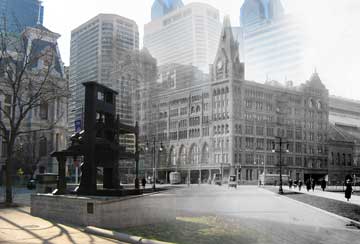
Pennsylvania Railroad Broad Street Station
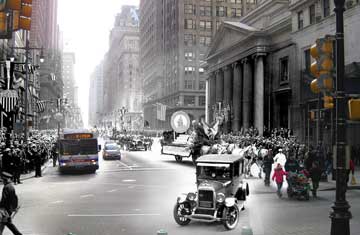
Looking South from Penn Square
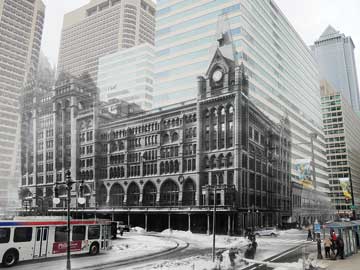
PRR Broad Street Station (1903 & today, 15th & JFK Blvd.)
Broad Street Station was the primary passenger terminal for the Pennsylvania Railroad (PRR) in Philadelphia from 1881 to the 1950s. Directly west of City Hall, the office towers of Penn Center now occupy the site.
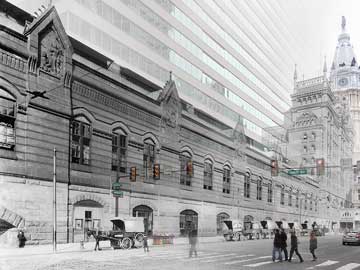
Pennsylvania Railroad Station looking towards City Hall from 16th & Market...1903.
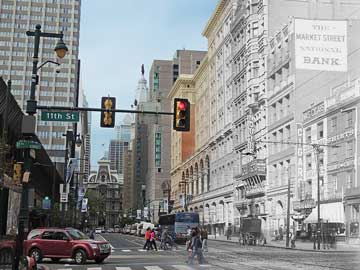
Reading Railroad Headhouse, 11th & Market looking West, (c1900 & today)
The headhouse was designed in 1891 by Francis H. Kimball, and the train shed by Wilson Brothers & Company. Construction began that same year, and the station opened on January 29, 1893.
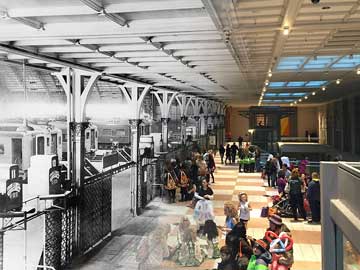
Reading Railroad Terminal (c1948 & today)
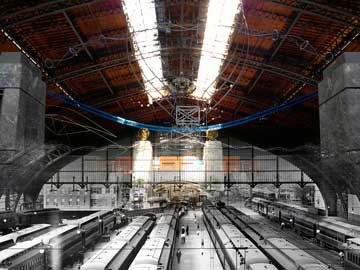
Reading Railroad Train Shed (Convention Center)
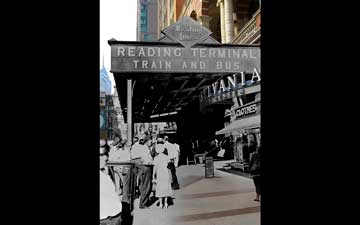
Reading Terminal Train and Bus, 12th & Market
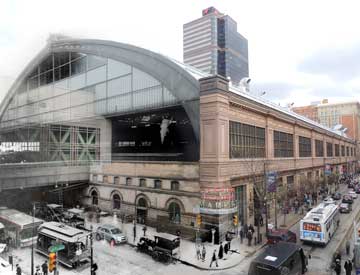
Reading Terminal Train Shed
In 1889, the Reading Railroad decided to build a train depot, passenger station, and company headquarters on the corner of 12th and Market Streets.
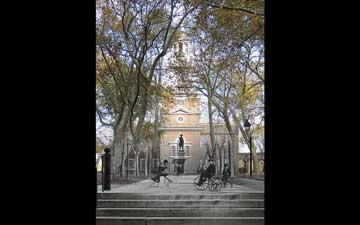
Independence Hall Courtyard
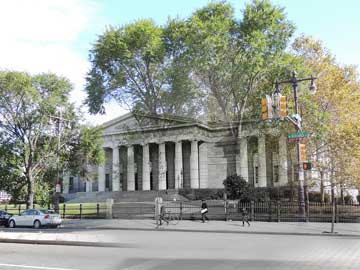
The Ridgeway Library (1904 & today)
The Ridgeway Library building was built 1873-78 at 900 South Broad Street, as a late example of Greek Revival architecture, with a bequest by Dr. James Rush to honor his wife, Phoebe Ann Ridgeway, for the Library Company of Philadelphia. Architect was Addison Hutton. Now occupied by the Philadelphia High School for the Creative and Performing Arts with a large 1997 addition in the rear. View from Broad Street. (Wikipedia)
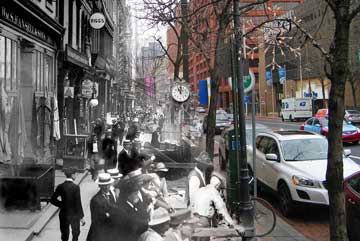
Riggs Clocks (310 Market Street)
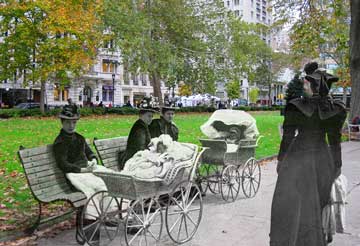
Rittenhouse Babies
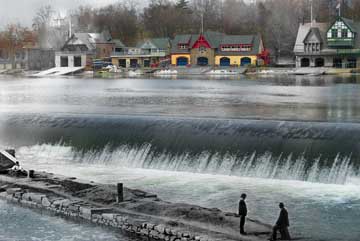
Boathouse Row
The history of Boathouse Row begins with the construction of the Fairmount Dam and the adjacent water works. The Dam was built in 1810 as part of a lock at the Falls of the Schuylkill to transport coal downriver.
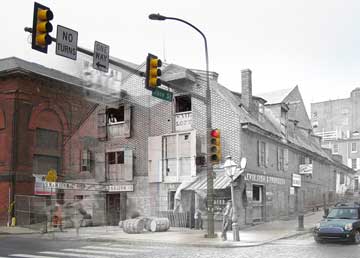
Sail Maker (Delaware Ave. & Race Street)
This old warehouse for salt and salt fish, also called a salthouse, was built in 1705, one of the first buildings to be erected on the Delaware waterfront. Its bricks and timbers were brought from England and were still sound when the building was taken down after 1900.
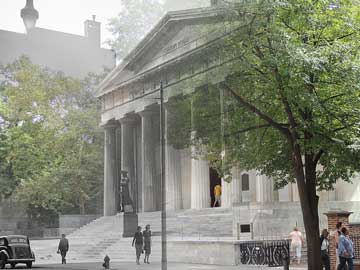
Second Bank of the United States, 420 Chestnut Street (1939 & today)
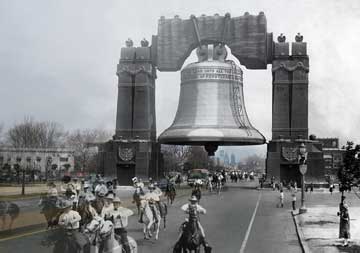
Sesquicentennial Bell in Marconi Plaza...which was built for the expo.
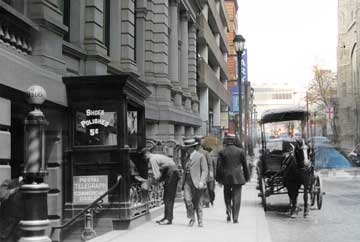
Shoe Shine
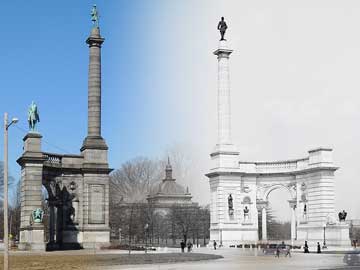
Smith Memorial Arch (c1905 & today)
In 1891, Richard Smith (1821-1894), a wealthy Philadelphia electroplate and type founder, created a will which provided $500,000 for a memorial arch to be adorned with portraits of Pennsylvania's Civil War military and naval heroes.
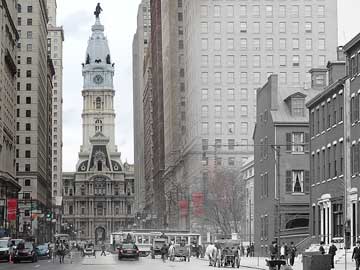
South Broad Street looking North from Locust Street. (c1905 & today)
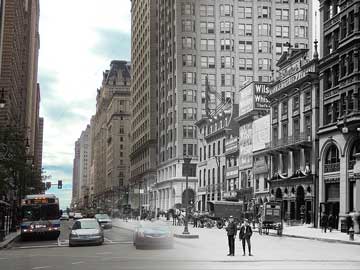
South Broad Street from City Hall (circa 1900 & today)
This was just before they took down all the buildings on the right and built the Girard Bank (today's Ritz Carlton).
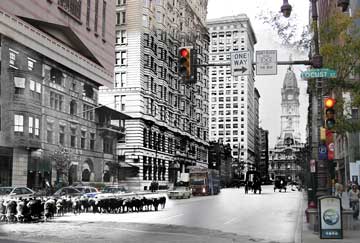
Broad Street Sheep
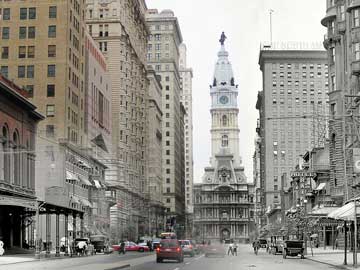
South Broad Street (Broad & Locust looking North)
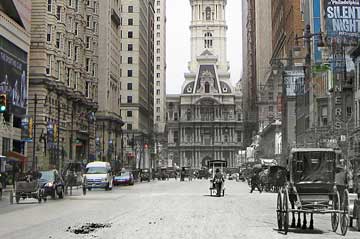
South Broad Street (c1905 & today)
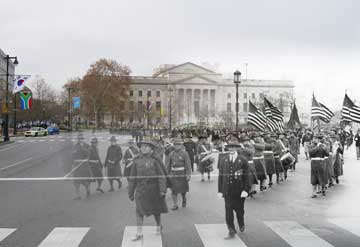
Spanish-American War Veterans - The Franklin Institute
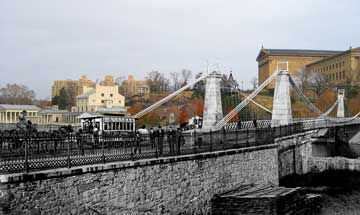
Spring Garden Street Bridge 1876
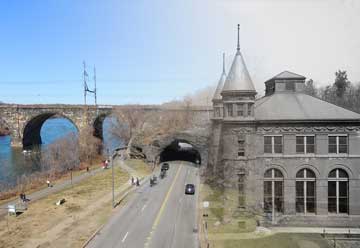
Spring Garden Water Works

Stanley Theater (19th & Market)
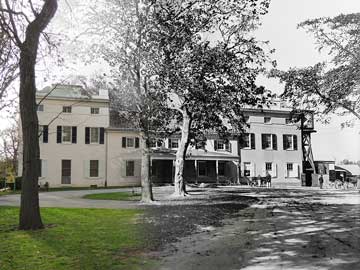
Strawberry Mansion (1901 & today)
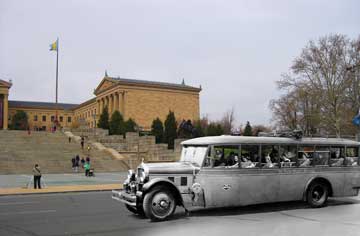
The Gray Line Sightseeing in front of the Art Museum.
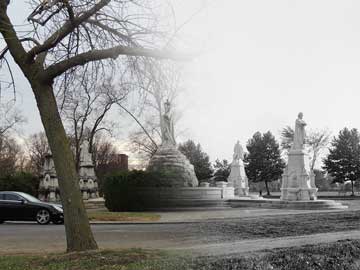
Total Abstinence Monument, Fairmount Park
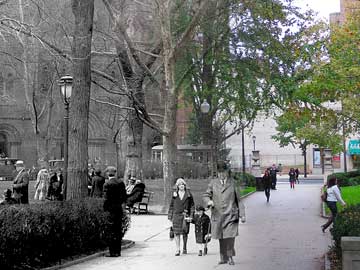
Trinity Church off Rittenhouse Square
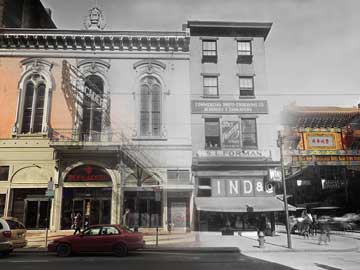
The Trocadero Theatre (10th & Arch)
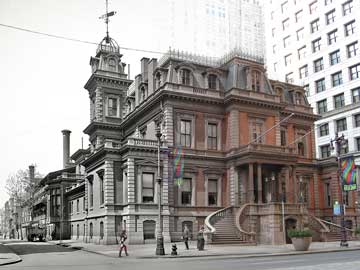
The Union League of Philadelphia (circa 1900 & today)
In 1862, The Union League of Philadelphia was founded as a Patriotic Society to support the policies of Abraham Lincoln. 150 years later, the Union League is a private, members only, Five Star Platinum Club and is ranked #1 in the Country. Membership is in the vanguard of Philadelphia life, counting among the 3,300 members many top leaders in business, academia, law, medicine, politics, religion and the arts.
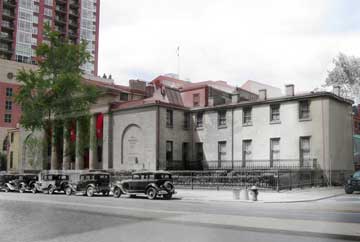
The University of the Arts - Broad & Pine
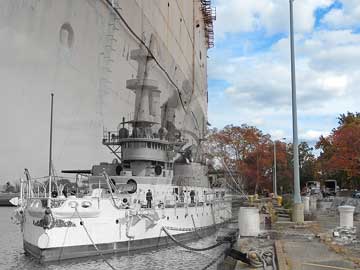
USS Indiana, League Island Navy Yard (c1895 & today)
Intrepid Ave. looking towards Broad Street. USS Indiana was the lead ship of her class and the first battleship in the United States Navy comparable to foreign battleships of the time. Authorized in 1890 and commissioned five years later, she was a small battleship, though with heavy armor and ordnance. The ship also pioneered the use of an intermediate battery. She was designed for coastal defense and as a result her decks were not safe from high waves on the open ocean. Indiana served in the Spanish–American War(1898) as part of the North Atlantic Squadron.
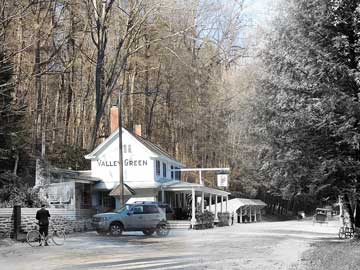
Valley Green (1906 & today)
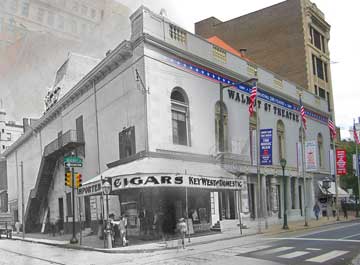
The Walnut Street Theatre
The Walnut Street Theatre first opened its doors on February 2, 1809. The Walnut's first theatrical production, The Rivals, had President Thomas Jefferson and the Marquis de Lafayette in attendance on opening night.
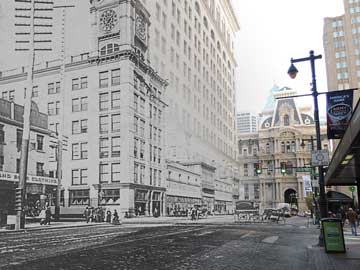
Wanamakers, 13th & Market St. (1896 & today)
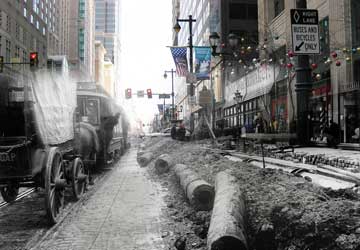
Market Street looking East towards 13th Street.
Wooden pipe removal.
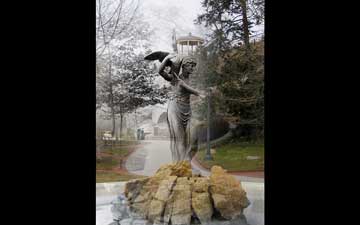
The Water Nymph
The water nymph is an allegorical figure representing the Schuylkill River, which provided the city's drinking water, and on her shoulder is a bittern, a native waterbird related to the heron. Hence, these works are also known as William Rush Carving His Allegorical Figure of the Schuylkill River.
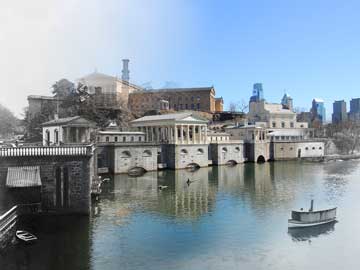
Fairmount Water Works
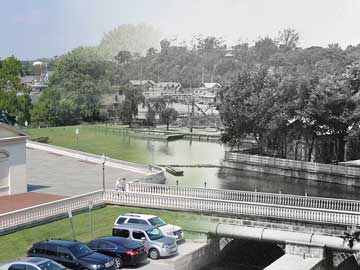
Fairmount Water Works looking towards Boathouse Row. Circa 1901 & today
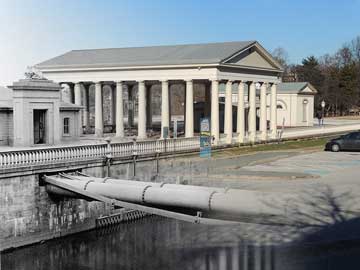
Fairmount Waterworks (c1875 & today)
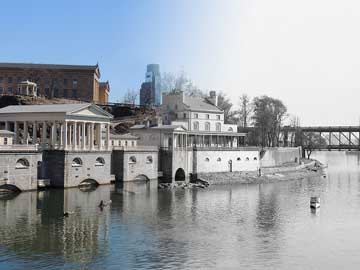
Fairmount Waterworks (c1900 & today)
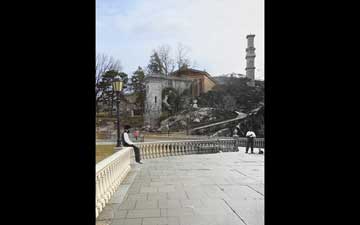
Fairmount Water Works Plaza
Fairmount Water Works plaza showing the observatory arch with workers in the foreground...well at least one of them was working! The decorative stone distribution arch, built in 1860, served as an observatory tower and a standpipe. The arch was torn down around the time the Water Works ceased operation in 1909.
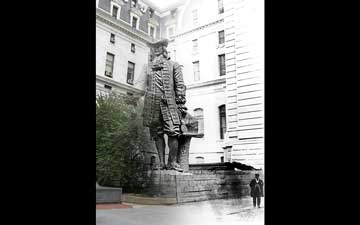
William Penn statue in City Hall Courtyard (c1893 & today)
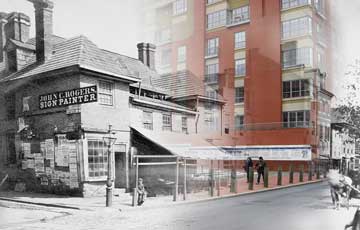
SE Corner of 2nd & Sansom
Originally built between 1687 and 1699, this house was once a residence of William Penn.
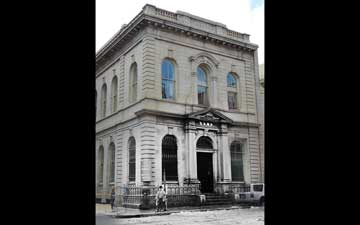
3rd & Vine Street
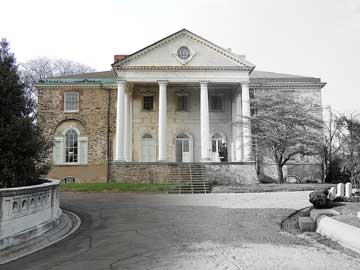
Woodlands Mansion (c1905 & today)
4000 Woodland Avenue. The land that would become The Woodlands was originally a 250-acre tract in Blockley Township on the west bank of the Schuylkill River. It was purchased in 1735 by the famous Philadelphia lawyer Andrew Hamilton.
































































































































































